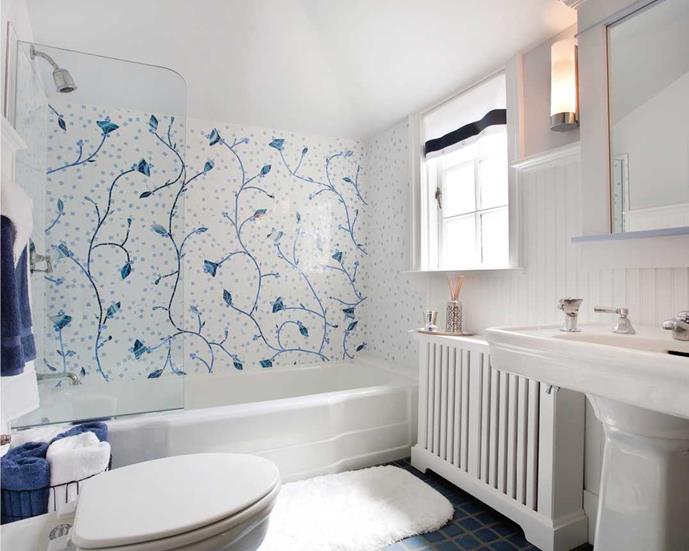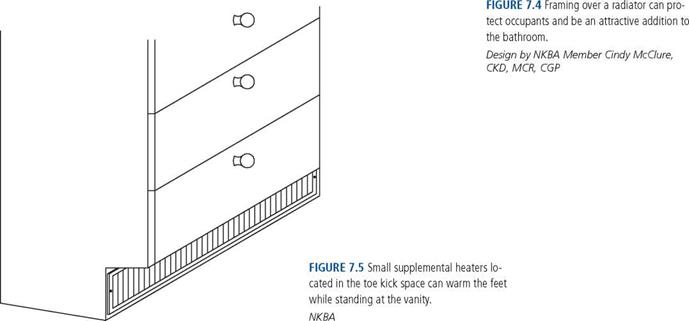Heating systems for bathrooms come in a wide variety of types. They can vary as to installation
needs, space requirement, responsiveness, comfort, and heating mode. Some of the most common
choices are listed below.
• infrared heat lamp. Recessed into the ceiling, these lamps are designed to heat what is directly below them. These heaters will do a decent job of warming your client up as they stand in one place, but because these heaters heat objects, they do not make good room heaters. As soon as someone moves from beneath the heater the air is cool. These lamps can be combined with a vent fan and light in a single ceiling fixture, or can be installed individually.
• Ceiling-mounted convection heaters. These units have a small heater and a fan that blows the warm air down onto the user and into the room. They may also be combined into a single ceiling unit with a vent fan and light. These units can heat a small bathroom area quite efficiently, but for larger bathrooms, multiple heaters or a more powerful unit would be needed.
• Wall heaters. Wall heaters are typically recessed into the wall and include a grate or screen over the heating elements. Most wall heaters are now electric, but some older homes may have gas wall heaters. Typically located on the lower portion of the wall, they can be somewhat dangerous because users can easily back into them and be burned.
• Floor-mounted radiators. In cases where hydronic heat is used throughout the home a client may have a radiator that must be incorporated into the plan. Protecting occupants from the hot radiator surface is an important consideration in a bathroom (see Figure 7.4).
• Ceiling or wall panel heaters. Electric heating coils can be installed in the ceiling or in walls behind the drywall. Ceiling units are especially welcome over a bathtub to keep the air warm. For wall applications, do not install the heaters higher than 48 inches (1219 mm) to avoid hammering a nail into the electric coils when hanging pictures.
• Toe kick heater. A small electric heater installed in the toe kick below the cabinet can provide comfortable supplemental heat to the feet and floor area (see Figure 7.5). Provision for this type of heater needs to be made when the cabinet is selected and installed.
• Baseboard heaters. Baseboard heaters are placed along the wall at floor level and can be either electric or hydronic. These are inexpensive to install and allow zonal control, but take up valuable floor space. Many small bathroom designs do not have enough wall space to accommodate this type of heater.
• Floor heating systems. Floor heating systems can be either electric or hydronic and will incorporate heating coils or tubes directly under the flooring materials. Floor heaters are popular in the bathroom because they give off an even heat that is comfortable to the feet. Stepping out of the tub or shower onto a warm floor is very soothing. Children especially like the warm floors because that is where they end up most of the time.
Electric floor heating systems are typically easier to install during construction. Hydronic systems are a good choice if there is hot water heat in other parts of the home. Hydronic tubing
|
|
|
|
can also be placed behind mirrors to prevent fogging, or used as the heating system for a towel warmer.
Either type of floor heater will raise the height of the floor because of the heating elements being placed under the flooring material, so door clearances may need to be adjusted. In new construction the additional thickness can be easily incorporated into the plan, but when remodeling, an already established door may need to be trimmed in order to clear the new floor height. It is not advisable to install floor heating systems under wood floors that could be damaged by excessive heat, unless you use a product that is designed to be installed under wood flooring. There are also special products that are made to be installed under carpet.





